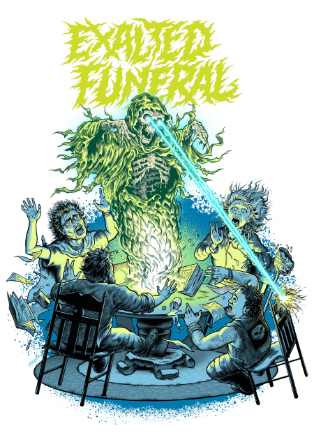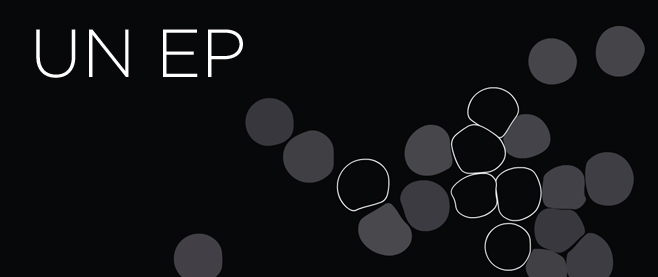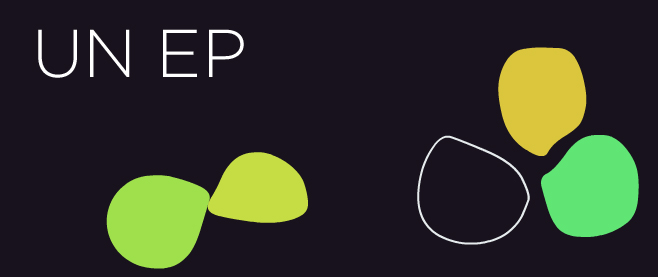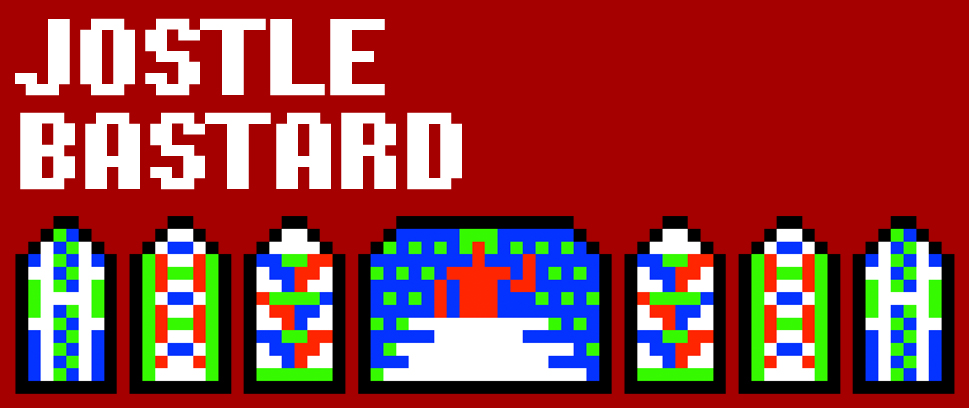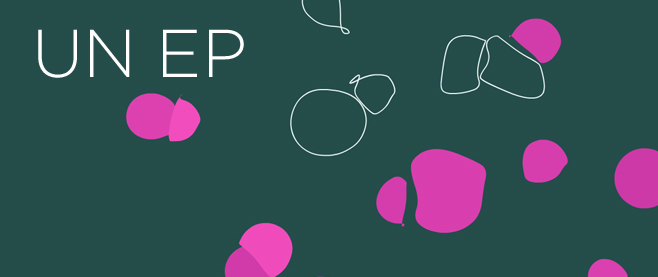
The Musical Art of UN EP
You are about to enter a world of free form ambient soundscapes. Let go of your pop music preconceptions and descent into the immersive musical experience that is UN EP, by Ian Snyder. Like any set of digital tools for a musician, UN EP explores abstract sounds and experimental music programming through interactive geometric art.
 My chat with Snyder began with a misunderstanding over a question about toys and real world musical instruments. Despite the confusion, Snyder’s answer seemed like a profound summation of his intentions in creating UN EP:
My chat with Snyder began with a misunderstanding over a question about toys and real world musical instruments. Despite the confusion, Snyder’s answer seemed like a profound summation of his intentions in creating UN EP:
“In what sense are these not real world instruments? And in what sense is a real world instrument not also a toy? I’d like to be certain of what we mean when we separate instrument from toy. What might make us say that the objects within UN EP are toys and not actual instruments?
“Perhaps it arises from their inability to create certain kinds of musical dissonance. Yet, this is not a quality instruments lack. The triangle and the lap dulcimer are examples of real world instruments similarly limited.
“Maybe it merely comes down to what we do with them. We play instruments. We play with toys. When we engage with UN EP, the experience is more like “playing with” than “playing.” I wanted to engender the riskless feeling of “playing with” without the pressure of the more performative “playing.”
What followed was a discussion of each of UN EP’s sound toys, with an eye towards the ins and outs of music production.
Unwinnable: Let’s start with “Cycle.” It seems to be a toy piano crossed with a spirograph, with the center line representing the piano keys. What inspired you to create an instrument that uses art to control sound?
I.S.: When I’m working on these, I feel more like I’m discovering them than creating them. The process is experimental. “Cycle” is one of my favorite discoveries. It’s not particularly complex, but it generates music that edges on being more structural and rhythmic than many of the other pieces in UN EP.
As for the idea of art controlling sound, well… this isn’t a particularly new idea. There have been other attempts to sonify, like Golan Levin’s Yellowtail. Before I made UN EP, I hadn’t encountered Yellowtail. It’s a good demonstration of how these ideas often exist as the logical conclusions of their medium rather than their creator’s singular, artistic vision.
For me, it’s almost always about creating a sound and then creating a visual metaphor to accompany that sound or creating cool visuals and then “scoring” them in a dynamic manner. Either way, though, interactivity is more of my central concern than either art or music.
Unwinnable: “Felt” seems like an experiment in drone keyboards. Would this be an accurate description? It seems like the art makes its own path, but it is up to the user to create sound layers. This is also set up like a keyboard/piano in that the low notes are off to the left and the high notes are off to the right.
I.S.: Yes, definitely. I wanted to replicate the feeling of messing around with long synth notes – stacking them on top of each other and building drones – to the player who might be too intimidated by a piano keyboard to ever try this. The vertical position of the mouse influences what kind of chord is played, also.
 Unwinnable: “Form” feels like a Asian string instrument. I love how it is in 3D and the user can rotate the ball to find higher and lower notes. It also seems like the loop the user creates is one measure (4 bars). Is this based on a guitar?
Unwinnable: “Form” feels like a Asian string instrument. I love how it is in 3D and the user can rotate the ball to find higher and lower notes. It also seems like the loop the user creates is one measure (4 bars). Is this based on a guitar?
I.S.: “Form” is all about that weird sound, for me! It’s an acoustic guitar with a metal paperclip carefully placed in the middle of the string to create a harmonic. When plucked, when you’re holding the guitar, the low notes sound like deep, tolling bells in the distance. When I recorded the sound, a lot of that bass was lost, sadly, but it still sounds pretty wild! The loop is indeed 4 bars. It probably also defaults to a pentatonic scale, which might be partly responsible for the Asian sound you identified.
Unwinnable: I think “Veil” is my favorite of the set. I could not decipher what instrument it is, but I love that you play with delay/echo. It seems like the art is completely random. Is the echo/delay effect solely controlled by the length of the mouse click or is it dependent on the X/Y axis? I like that this can go from light melodic delay to a harsh infinite echo.
I.S.: I really like “Veil” too! The plucking sound is a harmonic on an electric guitar, but I think the repetition lends it that ambiguity. I’m really fond of sounds whose origins can’t be neatly identified, or which have been twisted or re-contextualized beyond the point of easy recognition.
Originally, Veil was just the big, colorful state that occurs when you hold down the mouse and move around. But as soon as I added the grey-state it became about moving between these. For a long time, I didn’t know how that would occur. I thought it would be most natural to begin grey, and through spinning it around a lot it would slowly transform into the colored form. Like heating your hands by rubbing them together in the winter, it wouldn’t have been as instant a transition as it is now. The result is much more playful.
The echo and delay in the grey state actually isn’t affected by the mouse click directly. As soon as the mouse is released, it begins work on whatever sounds are currently playing in the colored state. Naturally, this sounds different when you click and release to immediately cut off a note, rather than when you let a note expire before releasing the mouse. It’s sort of… I don’t know… like you’re trying to catch the musical notes in a net.
Unwinnable: Finally, there’s “Verse.” Is this only controlled by the direction the user moves the mouse? It reminds me of the game Asteroids in that the notes almost appear as stars intersecting with each other. I like how it initially starts with a big sound, but mellows out to silence if the user doesn’t continue to move the mouse.
I.S.: Yeah, it does feel very celestial. Asteroids wasn’t a point of reference, but I can totally see it now!
Notes occur when points collide, and the mouse affects the momentum of points. If you wait more than 2 seconds, it triggers a key change.
———
Ian was gracious enough to share two additional sound toys that didn’t make the final cut into UN EP.
Unwinnable: The second “Cycle” app seems to just go on its own. Is it setup as a demo or is that the point?
I.S.: The second Cycle was actually the first version, and was more of an art object than a game, which is why there’s no interaction… After a while the scale it’s playing in mutates, becomes dissonant. Neither of these are going to appear in the final version.
Unwinnable: The second “Verse” app seems like a noise generator (which is pretty awesome). Was that the intent?
So, dark confession, I have NO idea what the second “Verse” app is doing! I tried to add between each of the points and it freaked out like that. It’s literally the same thing but with one extra force between the points. I think, in effect, this just makes all the sounds clip because they’re colliding constantly and laying too many sounds on top of each other. Just on sound alone it’s one of my favorites. I really love when it switches briefly into normalcy and then almost immediately back into that grating, absurd screech! So I guess it’s a noise generator, yeah. [Editor’s note: This one is VERY LOUD]
———
You can play UN EP here. For more on UN EP, read Steve Haske’s interview with Ian Snyder about the game’s development. Finally, check out the addendum to listen to the ambient songs Ken recorded using UN EP and see UN EP production art.
Ian Snyder’s Twitter compositions can be found @whatisian and you can explore more of his work on his website. Ken Lucas is on Twitter @Kursse.
